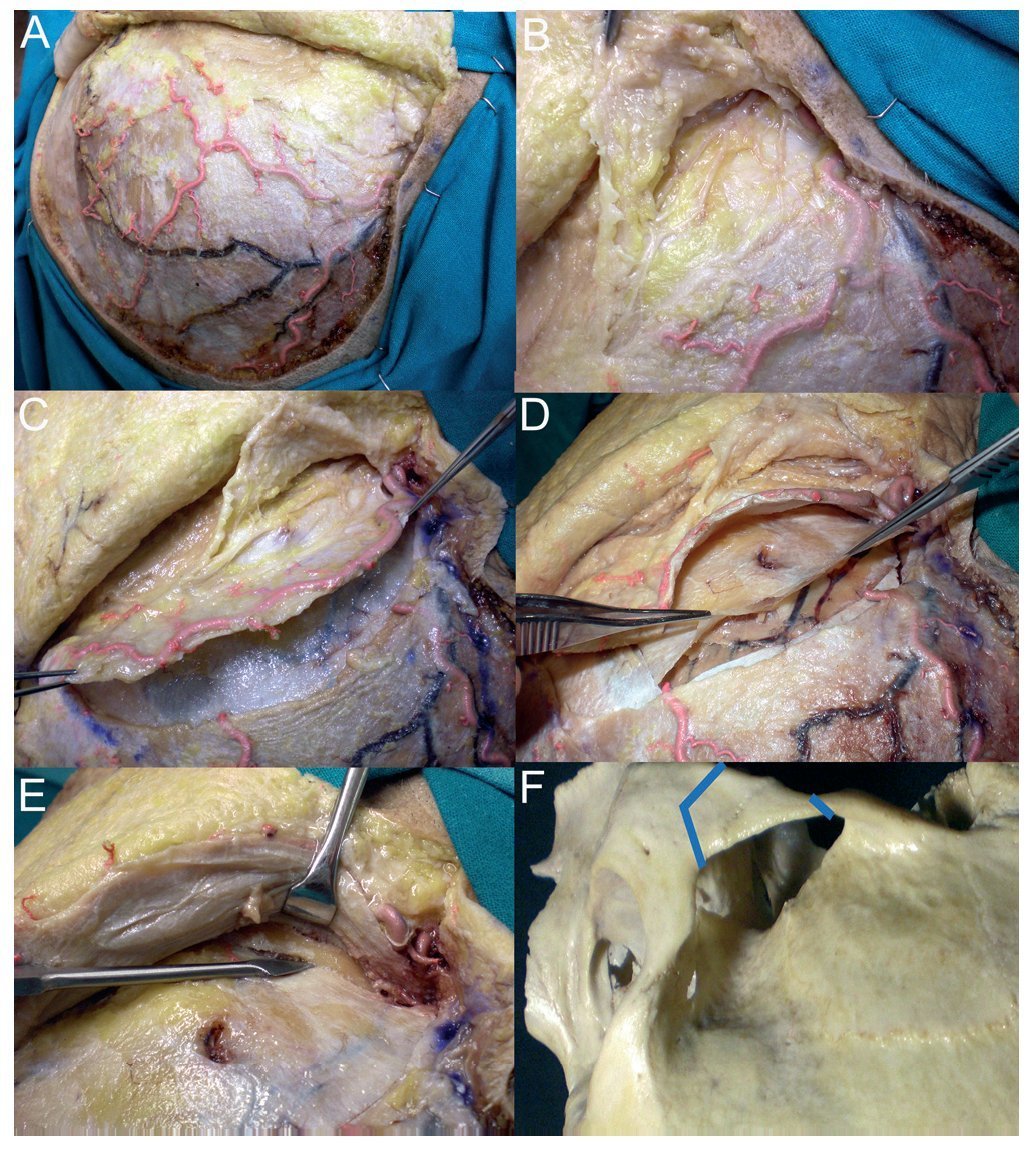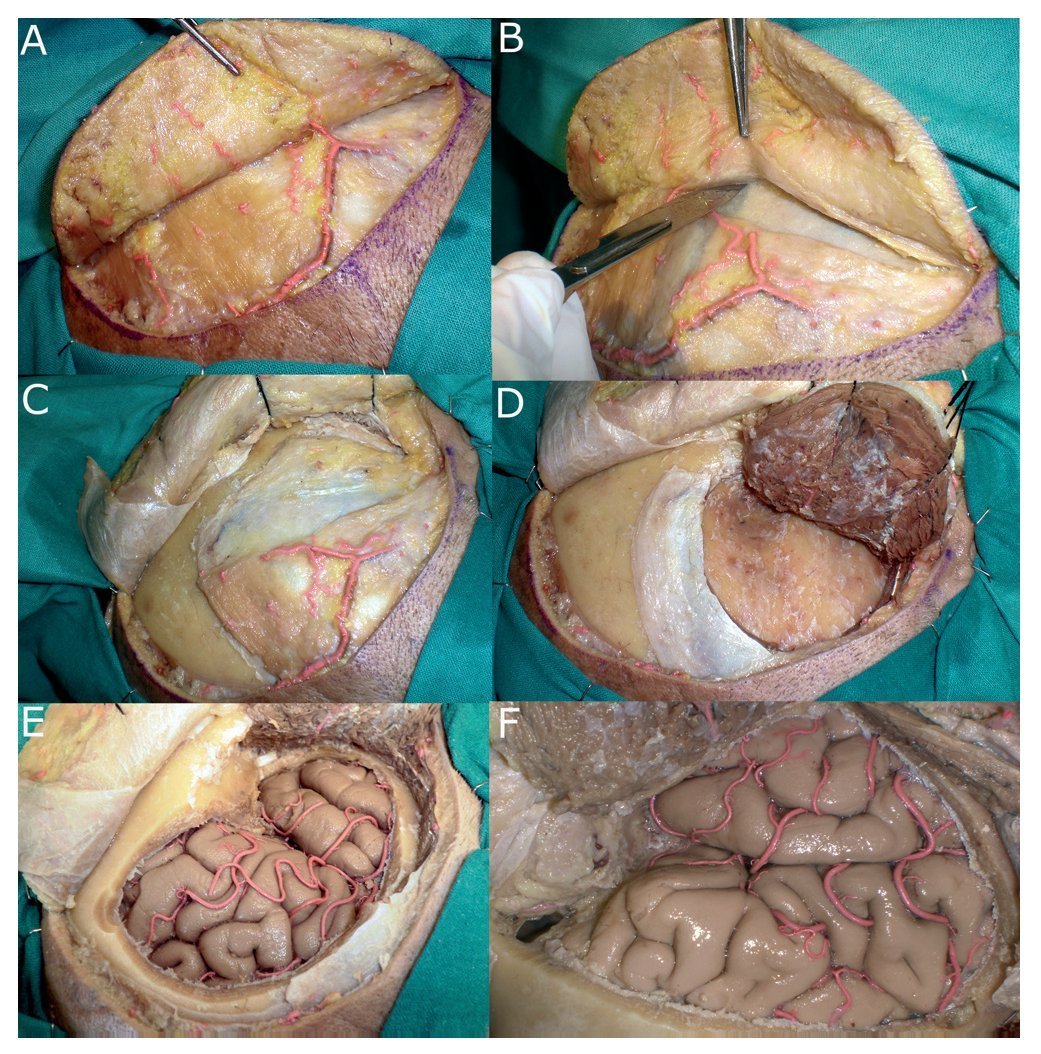Objetivo: Estudio cadavérico de las estructuras anatómicas de la región temporal, así como de los aspectos técnicos del abordaje pterional transcigomático.
Material y métodos: Fueron utilizados 6 especímenes cadavéricos (12 regiones temporales) previamente formolizados, cuyo sistema circulatorio arterial fue inyectado con silicona teñida de rojo. Las disecciones se realizaron utilizando el instrumental y la técnica microquirúrgica estándar.
Resultados: Se confirma la existencia de una doble capa superficial y profunda en la fascia temporal superficial, lo que permite la osteotomía cigomática respetando la integridad del músculo temporal y de las ramas de la arteria temporal superficial y del nervio facial. Se detallan las líneas de la osteotomía para preservar la articulación témporo-mandibular y una correcta reposición del colgajo óseo. La exposición de estructuras intracraneales obtenida mediante dicho abordaje se compara favorablemente con aquellas obtenidas mediante el abordaje pterional convencional y el abordaje órbito-cigomático.
Conclusiones: El abordaje pterional transcigomático ofrece una amplia exposición del lóbulo temporal para la realización de abordajes transsilvianos, pretemporales y/o subtemporales en casos seleccionados de patología neuroquirúrgica. Es necesario un detallado conocimiento anatómico de la región temporal para obtener los mejores resultados quirúrgicos, estéticos y funcionales.
Objective: Cadaveric study of the anatomical structures of the temporal region, as well as the technical aspects of the transzygomatic pterional approach.
Material and methods: Six human formalin-fixed heads, whose arterial circulatory system was injected with red-dyed silicone, were studied (12 temporal regions). Dissections were performed using standard microsurgical techniques and instruments.
Results: We confirm the existence of a double superficial and deep layer within the superficial temporal fascia, which makes possible to perform the zygomatic arch osteotomy without damaging the temporal muscle and the branches of the superficial temporal artery and the facial nerve. The shape and location of the osteotomies to preserve the témporo-mandibular joint and ligaments and to provide correct reconstruction of the bone flap are described. We compare the exposure of intracranial structures obtained by this approach with those obtained by the conventional pterional approach and the orbitozygomatic approach.
Conclusions: The transzygomatic pterional approach provides wide exposure of the temporal lobe for trans-sylvian, pre-temporal and/or subtemporal approaches in selected cases of neurosurgical pathology. A detailed anatomical knowledge of the temporal region is necessary to achieve the best surgical, functional and cosmetic results.
Artículo

Si es la primera vez que accede a la web puede obtener sus claves de acceso poniéndose en contacto con Elsevier España en suscripciones@elsevier.com o a través de su teléfono de Atención al Cliente 902 88 87 40 si llama desde territorio español o del +34 932 418 800 (de 9 a 18h., GMT + 1) si lo hace desde el extranjero.
Si ya tiene sus datos de acceso, clique aquí.
Si olvidó su clave de acceso puede recuperarla clicando aquí y seleccionando la opción "He olvidado mi contraseña".









